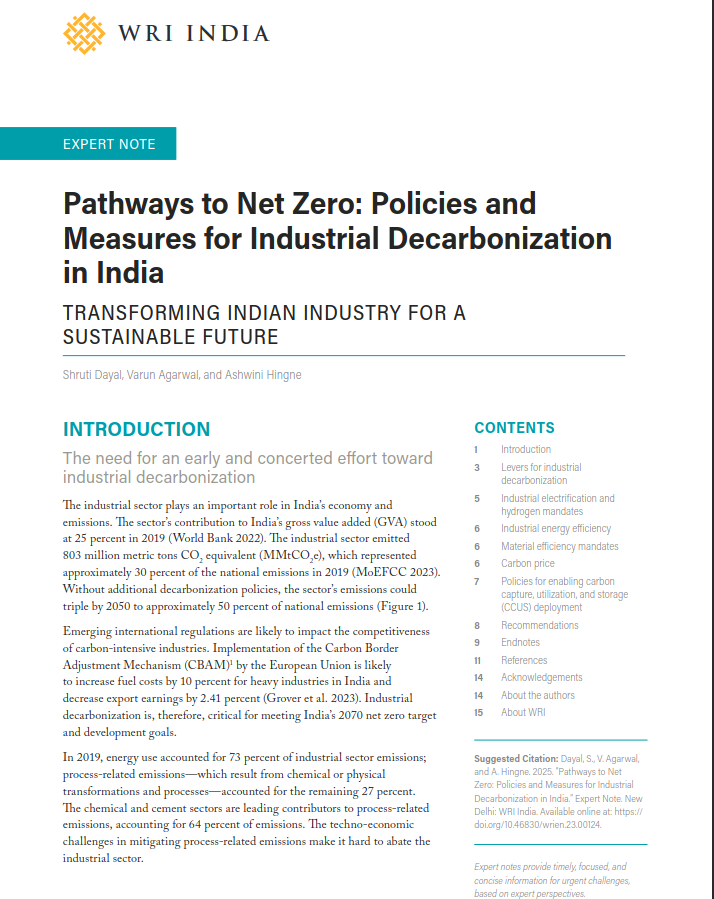For a wider cover: meeting climate goals
by -
This blog post originally appeared in The Hindu.
In 2015, India made a Bonn Challenge commitment to place into restoration 13 million hectares (Mha) of degraded land by 2020 and an additional 8 Mha by 2030. India’s Nationally Determined Contributions (NDCs) have also pledged to sequester 2.5 to 3 billion tonnes of CO2 equivalent additionally by 2030 through enhanced tree cover. Initial government estimates suggest that to achieve this, India will need to extend tree cover on at least 28-34 million hectares, outside of the existing forest cover.
As different States work to achieve these commitments, it appears that there is an over-reliance on plantations. In July this year, Madhya Pradesh planted 66 million trees in 12 hours to enter the record books, overtaking Uttar Pradesh’s record of planting 49.3 million trees in a day, in 2016. Other States are also expected to follow suit.
Improving ecology
Notably, neither the Bonn Challenge nor the NDCs are about large-scale plantations alone. The Bonn Challenge, for instance, lays emphasis on landscape approaches — a model aimed at improving the ecology of a landscape as a whole in order to benefit local livelihoods and conserve biodiversity. The NDC lays emphasis not only on carbon sequestration but also adaptation to climate change through a strengthened flow of benefits to local communities that are dependent on forests and agriculture for sustenance.
This also reflects the spirit of India’s policy framework on forests which lays emphasis on a landscape approach to manage forest and tree cover, so that the flow of multiple ecosystem services — including food security, climate mitigation and adaptation, conservation of biological diversity and water supplies — is secured.
In this context, large-scale plantation drives, which often do not lay stress on species selection, the quality of planting materials or survival rates, nor recognise tenure and resource rights to ensure that the benefit flows to communities, do not really achieve the goals. Plantations do have their space, but as one among a larger suite of interventions. However, to operationalise a landscape approach, we must protect healthy forest areas from deforestation, degradation and fragmentation. We must also creatively integrate trees into different land uses.
India has numerous models that are suited for different regions and farm household sizes to draw upon, and must not rely on plantation drives alone to secure environmental and developmental outcomes.
Tree-based interventions
The nation practises at least 35 types of agroforestry models that combine different trees that provide timber, fruits, fodder, fuel and fertilizers with food crops. This diversifies income from farming, and improves land productivity. Farmer-managed natural regeneration (FMNR) systems where farmers protect and manage the growth of trees and shrubs that regenerate naturally in their fields from root stock or from seeds dispersed through animal manure can also deliver several economic and ecosystem benefits.
In Niger, West Africa, farmers operating on 5 Mha of land added roughly 200 million on-farm trees using FMNR in the past 30 years. This has sequestered 25-30 million tonnes of carbon and increased annual agricultural production by about 500,000 tonnes.
In India, the National Bank for Agriculture and Rural Development’s (NABARD’s) ‘Wadi’ model and the Foundation for Ecological Security’s re-greening of village commons project are good examples of tree-based interventions which are proving to have great value in terms of cost-effectiveness as well as the range of benefits they deliver to communities.
An important success factor in large-scale tree-based programmes is security of tenure and land rights. In several parts of the world, securing tenure over forests has been established as a cost-effective way of achieving climate sequestration. In Brazil, for instance, the average annual costs of providing communities with secure rights to their forest is $1.57 (₹103) per hectare (ha) while the resulting carbon-mitigation benefits range from $38/ha to $230/ha per year. That’s a net value of $1,454-1,743/ha for a period of 20 years.
It is also important to have in place a performance monitoring system to quantify tree survival rates and the benefits to communities. This can be achieved through a combination of remote sensing, crowd sourced, ground-level monitoring with support from communities and civil society organisations.
Better to ROAM?
As we regenerate trees through different interventions, it is critical to ensure that owners have the right to manage and use these trees. It is also critical to use scientific evidence-based methodology with a participatory approach to determine the right type of tree-based interventions most suitable to a certain land use. A tool called the Restoration Opportunities Assessment Methodology (ROAM) is being used in 40 countries to find the best methods for landscape restoration. The tool includes rigorous analysis of spatial, legal and socio-economic data and draws on consultations with key stakeholders to determine the right type of interventions. In India, this tool is being piloted in Uttarakhand and Madhya Pradesh.
India has the policy framework, the political will and financing to endorse landscape restoration. What we really need now is innovation and imagination to build replicable and scalable models with a participatory approach to achieve the country’s climate goals through landscape restoration.
Dr. Rohini Chaturvedi is the Director of the Landscape Restoration Program at WRI India.


